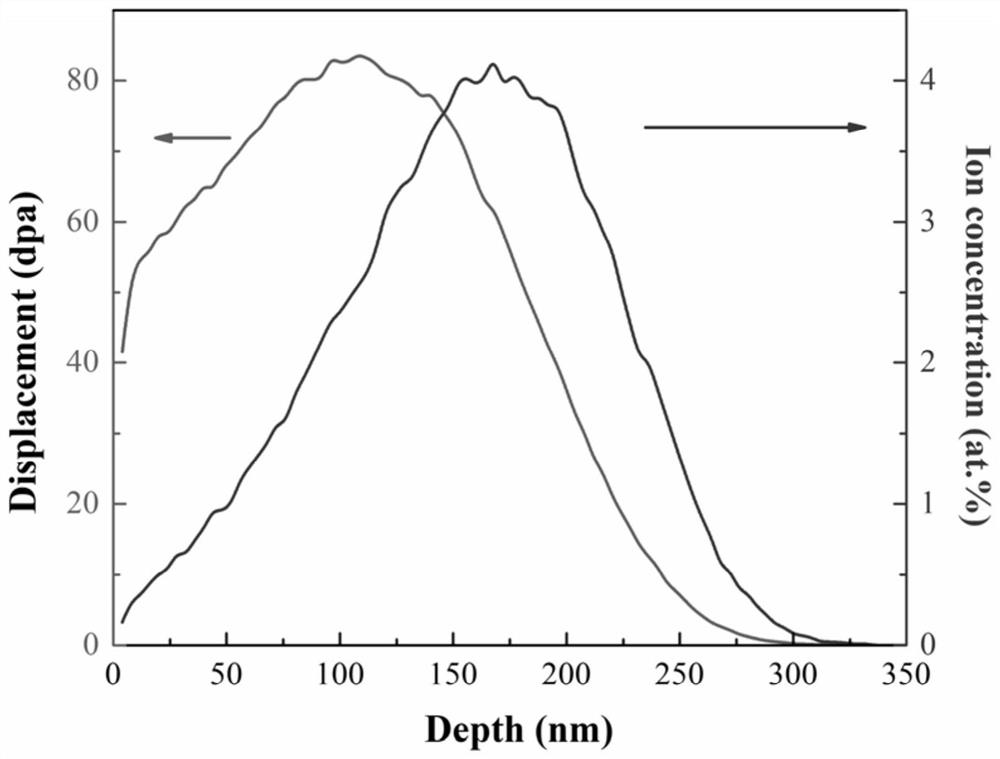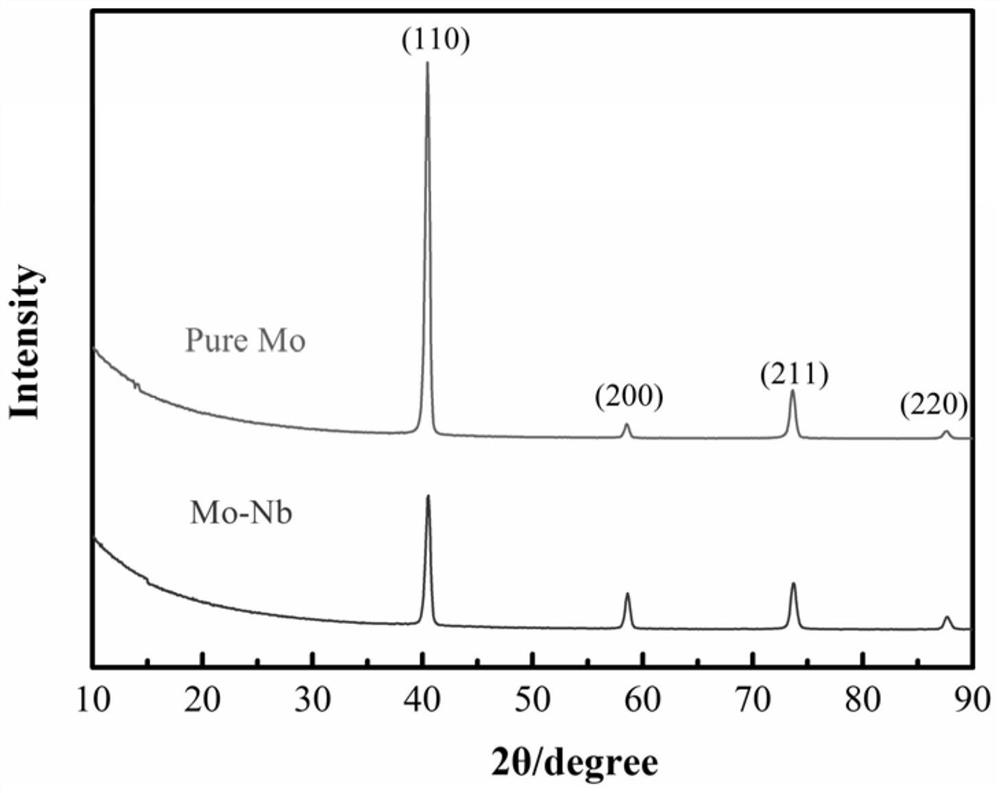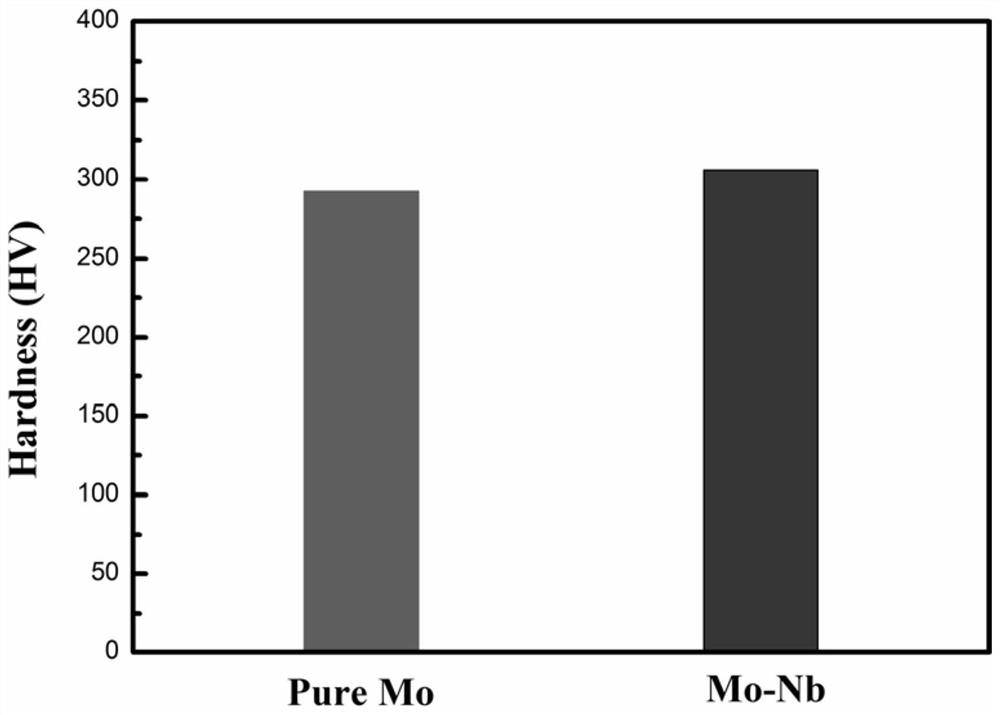Surface alloying method for improving water corrosion resistance of refractory metal molybdenum
A technology of surface alloying and refractory metal, applied in the field of surface treatment of refractory metal molybdenum which is resistant to water corrosion, to achieve the effect of improving water corrosion resistance, improving passivation performance and good uniformity
- Summary
- Abstract
- Description
- Claims
- Application Information
AI Technical Summary
Problems solved by technology
Method used
Image
Examples
Embodiment 1
[0056] Through the traditional powder metallurgy method, the roasted molybdenite (MoS 2 ) to obtain molybdenum trioxide mixed with impurities, and the mixture of ammonia solution and molybdenum trioxide is dissolved, separated and purified to obtain ammonium molybdate solution. Decompose the ammonium molybdate solution at 500°C to obtain molybdenum trioxide, and then reduce it twice in an ammonia atmosphere to obtain pure molybdenum powder. The pure molybdenum powder is uniaxially cold-pressed to obtain a pressed sheet. The pressed blank was pressureless sintered in a hydrogen atmosphere at a sintering temperature of 1960°C and kept for 6 hours. The molybdenum plate was rolled at 1350°C, held in a hydrogen atmosphere for 10 minutes, and double-rolled in the air. After forging, the final plate thickness was 5mm. The specific impurity concentration in the prepared molybdenum plate was shown in Table 1. .
[0057] Cut the molybdenum plate into 15x15x3mm square samples by wire ...
Embodiment 2
[0059] Through the traditional powder metallurgy method, the roasted molybdenite (MoS 2 ) to obtain molybdenum trioxide mixed with impurities, and the mixture of ammonia solution and molybdenum trioxide is dissolved, separated and purified to obtain ammonium molybdate solution. Decompose the ammonium molybdate solution at 500°C to obtain molybdenum trioxide, and then reduce it twice in an ammonia atmosphere to obtain pure molybdenum powder. The pure molybdenum powder is uniaxially cold-pressed to obtain a pressed sheet. The pressed blank was pressureless sintered in a hydrogen atmosphere at a sintering temperature of 1960°C and kept for 6 hours. The molybdenum plate was rolled at 1350°C, held in a hydrogen atmosphere for 10 minutes, and double-rolled in the air. After forging, the final plate thickness was 4mm. The specific impurity concentration in the prepared molybdenum plate is shown in Table 1. .
[0060] Cut the molybdenum plate into a 10x10x3mm square sample by a wir...
Embodiment 3
[0062] Through the traditional powder metallurgy method, the roasted molybdenite (MoS 2 ) to obtain molybdenum trioxide mixed with impurities, and the mixture of ammonia solution and molybdenum trioxide is dissolved, separated and purified to obtain ammonium molybdate solution. Decompose the ammonium molybdate solution at 500°C to obtain molybdenum trioxide, and then reduce it twice in an ammonia atmosphere to obtain pure molybdenum powder. The pure molybdenum powder is uniaxially cold-pressed to obtain a pressed sheet. The pressed blank was pressureless sintered in a hydrogen atmosphere at a sintering temperature of 1960°C and kept for 6 hours. The molybdenum plate was rolled at 1350°C, held in a hydrogen atmosphere for 10 minutes, and double-rolled in the air. After forging, the final plate thickness was 4mm. The specific impurity concentration in the prepared molybdenum plate is shown in Table 1. .
[0063] Cut the molybdenum plate into 10x10x2mm square samples by wire c...
PUM
| Property | Measurement | Unit |
|---|---|---|
| diameter | aaaaa | aaaaa |
| melting point | aaaaa | aaaaa |
Abstract
Description
Claims
Application Information
 Login to View More
Login to View More - R&D
- Intellectual Property
- Life Sciences
- Materials
- Tech Scout
- Unparalleled Data Quality
- Higher Quality Content
- 60% Fewer Hallucinations
Browse by: Latest US Patents, China's latest patents, Technical Efficacy Thesaurus, Application Domain, Technology Topic, Popular Technical Reports.
© 2025 PatSnap. All rights reserved.Legal|Privacy policy|Modern Slavery Act Transparency Statement|Sitemap|About US| Contact US: help@patsnap.com



